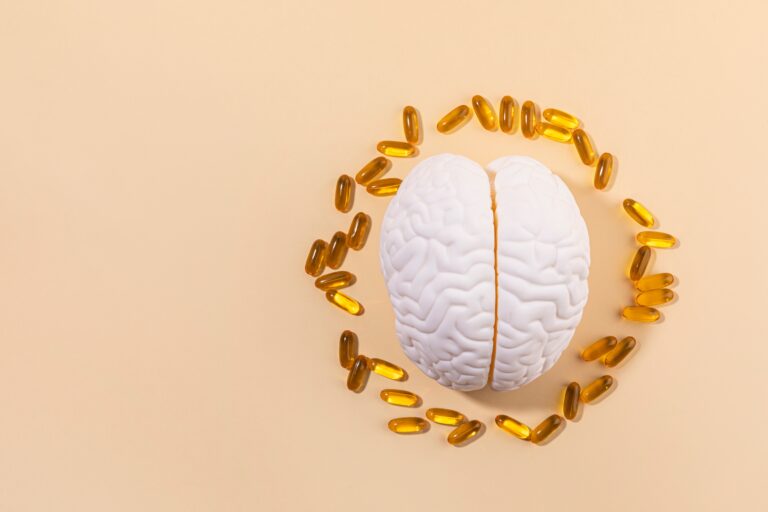A Profile of Important Immune Cells
Summary
The immune system is a complex network of cells and signaling molecules that defend the body against infection. It requires careful coordination of many different types of cells, each with a specific role to play.
The immune system defends the body from potentially harmful microorganisms, such as viruses and bacteria. Through complex interactions between immune cells and signaling molecules, the immune system can recognize foreign compounds, and then neutralize and destroy them. When this system fails or falls short, health issues can arise. Because of this, each type of unique cell plays a vital role in protecting the body and maintaining optimal immune health.
Basics of Immunity
The immune system consists of two components– the innate immune system and the adaptive immune system.1 The innate immune system quickly responds to a foreign compound using non-specific processes.1 It consists of physical barriers to prevent pathogen entry as well as biochemical mechanisms and inflammatory responses to broadly destroy any invader. In contrast, the adaptive immune system is highly specific and takes longer to mount a response. Adaptive immune cells recognize specific antigens or help other cells do so, developing a memory over time.
Coordination between the innate and adaptive immune systems is essential for a healthy, appropriate immune response. When the innate immune system recognizes a pathogen, it initiates an inflammatory response and recruits cells to the site of the issue.2 It does so by secreting signals, often chemicals or hormones such as cytokines and other inflammatory mediators.2 These signals vary throughout each phase of the immune response. Once a threat is neutralized, immune cells work to clear cellular debris, such as dead cells, and repair damaged tissue.
| Important Immune Definitions | |
| Cytokine | Small proteins that deliver a signal between cells; often categorized as either pro- or anti-inflammatory |
| Pathogen | Any organism or agent that can cause a disease in the body |
| Antigen | A foreign compound that induces an immune response |
| Antibody | A protein produced by the immune system when it detects a harmful substance or antigen |
| Antigen-presenting cell | A subset of immune cells that process and present antigens for recognition by other immune cells |
The Key Players: Profiles of Important Immune Cells
Neutrophils
As a first line of defense, neutrophils travel to sites of active inflammation where they engulf and destroy microbes in a process called phagocytosis.3 They also help coordinate the immune response by directing innate and adaptive immune cells via cytokines.2,3 Neutrophils are relatively short-lived and found in the blood, primarily in response to infection.
Macrophages
Similar to neutrophils, macrophages are first responders that engage in the process of phagocytosis to engulf and kill foreign invaders.2 They secrete a variety of destructive substances, including pro-inflammatory cytokines, to help damage the invading microorganism before it is engulfed and fully destroyed.4 Macrophages also help stimulate tissue repair and function as antigen-presenting cells (APCs). APCs are cells that break down pathogens into pieces called antigens and present them to other immune cells to mount the appropriate response.2,4,5 Macrophages are derived from a type of white blood cell called monocytes, which can develop into other important immune cells.4,6
Dendritic cells
Dendritic cells initiate the adaptive immune response, working as professional APCs.6,7 They also translate signals from pathogens to alter the immune response, connecting the innate immune system to the adaptive immune system.2,7 Dendritic cells are widely distributed throughout the body, allowing them to maximize the number of antigens they encounter and activate adaptive immune cells throughout the body.7
Lymphocytes
Lymphocytes play a critical role in the adaptive immune system, responding to specific pathogens and developing a memory in the process. The adaptive immune system builds antibodies against specific pathogens, allowing for a more specific and efficient response upon the next exposure.4 Lymphocytes can be further classified as T cells, B cells, or natural killer (NK) cells.
T cells
T cells are formed in bone marrow but mature in the thymus.2 They express unique receptors, known as T cell receptors, that allow them to rapidly multiply when activated.2 In response, they secrete cytokines and direct the immune response.2 This is known as the cell-mediated immune response as it relies on immune cells, not antibodies, for the adaptive immune response.3 T cells circulate throughout the body, via the lymphatic system and bloodstream, as well as congregate in lymph nodes where they are more likely to encounter a trigger, such as virus-infected cells or cancer cells.2 In fact, T cells are critical to preventing tumor formation due to their ability to identify antigens on tumor cells and destroy them.8
There are three types of T cells- cytotoxic T cells, helper T cells, and regulatory T cells. Cytotoxic T cells destroy infected cells, kill tumor cells, and produce other cells that can create an immune response and contribute to immune system memory.2 Helper T cells (Th) establish and maximize the immune response but do not exhibit cytotoxic or phagocytic activity, meaning they cannot directly kill infected cells.2 Rather, they mediate the immune response, directing cells to perform their respective tasks and regulating the overall immune system response through cytokines.2 Finally, regulatory T cells (T reg) limit or suppress the immune response to control dysfunction, helping protect against autoimmune diseases.2 They are involved in the resolution of a normal immune response and also aid in the development of immune tolerance to certain foreign antigens, like those found in food.2
B cells
B cells form in bone marrow, similar to T cells, however, they mature there before leaving.2 They express a unique antigen-binding receptor that allows them to recognize antigens directly, without the need for antigen-presenting cells.2 B cells primarily function to produce antibodies against foreign antigens, making them a critical component of the body’s response to vaccines.2 During this process, B cells can differentiate into memory B cells which are essentially long-lived survivors of previous infections.2 They respond quickly to re-exposure, producing antibodies and eliminating the antigen.2
Natural Killer cells
As the name implies, natural killer (NK) cells are involved in the destruction of bacteria, virus-infected cells, and tumor cells.2 Similar to T cells, NK cells are part of the cell-mediated immunity response which do not contain antigen-specific receptors but can recognize and destroy abnormal cells.2,6 Upon identifying an infected cell, NK cells will release cytokines to mobilize APCs and coordinate the immune response.2
Mast cells
Mast cells play a major role in both asthma and allergies, mediating the inflammatory response to a “non-self” trigger and producing cytokines and other chemicals in response.2 During an allergic reaction, mast cells release histamine and other inflammatory mediators that cause blood vessels to expand and cause itchy and swollen skin in the surrounding areas.9 They can also lead to increased mucus production in the airways, making them narrower.9
Immune Cell Dysregulation and Disease
The immune system relies on precise communication and coordination between immune cells. Dysfunction in any area of the immune response can give rise to immune diseases. For example, autoimmune conditions are caused by an inappropriate reaction to “self” rather than “non-self” cells that do not belong in the body.2 This causes an attack on something harmless to the body.
Other immune diseases caused by immune cell dysregulation include hypersensitivities, such as allergies. An overactive immune response causes hypersensitivity reactions.2 The most common type of immune hypersensitivity is an allergic reaction. Upon exposure to an allergen, mast cells and other immune cells are sensitized, resulting in an overpronounced reaction upon the next exposure.2 Common environmental allergens include pet dander, pollen, and molds, although food allergens can also fall into this category.
| The immune system relies on precise communication and coordination between immune cells. Dysfunction in any area of the immune response can give rise to immune diseases. |
The immune system is also closely linked to cancer, often protecting from tumor formation. Immune cells can inhibit tumor growth and progression when they recognize antigens on cancer cells and destroy them.10 However, if the immune response is unresolved, resulting in chronic inflammation, it may promote the growth and progression of cancer.10 Additionally, some tumor cells suppress the immune system, helping avoid destruction and worsening overall immune health.10
Nutrition for Immune Health
Several nutrients and herbs support and enhance the immune system. Vitamins and minerals are involved in several steps of the immune response including modulating inflammation, limiting oxidative stress, and maintaining epithelial and mucosal barriers to prevent pathogen entry.1 While nearly every nutrient plays a role in supporting the immune system, vitamins C, D, and E as well as zinc, iron, and selenium are especially important for optimal immune health.1 Similarly medicinal herbs, including echinacea, ginger, garlic, and elderberry can also promote a strong and healthy immune system.11,12
The immune system is complex and intricate, defending the body but also affecting other aspects of health and function. Immune cells regulate inflammation, cellular signals, and even cancer development or destruction. Each type of immune cell plays an important role in the body and dysfunction can have far-reaching consequences.
- Gombart, A.F., Pierre, A., Maggini, S. (2020). A Review of Micronutrients and the Immune System-Working in Harmony to Reduce the Risk of Infection. Nutrients, 12:236.
- Marshall, J.S., Warrington, R., Watson, W., Kim, H.L. (2018). An introduction to immunology and immunopathology. Allergy Asthma Clin Immunol, 14:49.
- Rosales, C. (2018). Neutrophil: A Cell with Many Roles in Inflammation or Several Cell Types? Front Physiol, 9:113.
- Nicholson, L.B. (2016). The immune system. Essays Biochem, 60:275.
- Wynn, T.A., Vannella, K.M. (2017). Macrophages in tissue repair, regeneration, and fibrosis. Immunity, 44(3):450.
- Janeway, C.A., Travers, P., Walport, M., Shlomchik, J. (2001). Immunobiology: The Immune System in Health and Disease. 5th edition. New York: Garland Science. Available from: https://www.ncbi.nlm.nih.gov/books/NBK10757/.
- Liu, K. (2016). Dendritic cells. Encyclopedia of Cell Biology, 2016:741.
- Xia, A., Zhang, Y., Xu, J., Yin, T., Lu, X.-J. (2019). T Cell Dysfunction in Cancer Immunity and Immunotherapy. Front Immunol, 10:1719.
- Galli, S.J., Tsai, M. (2013). Mast cells in allergy and infection: Versatile effector and regulatory cells in innate and acquired immunity. Eur J Immunol, 40(7):1843.
- Zamarron, B.F., Chen, W. (2011). Dual Roles of Immune Cells and Their Factors in Cancer Development and Progression. Int J Biol Sci, 7(5):651.
- Sultan, M.T., Butt, M.S., Qayyum, M.M.N., Suleria, H.A.R. (2014). Immunity: plants as effective mediators. Crit Rev Food Sci Nutr, 54(10):1298.
- Isbill, J., Kandiah, J., Kruzliakova, N. (2020). Opportunities for Health Promotion: Highlighting Herbs and Spices to Improve Immune Support and Well-being. Integr Med, 19(5):30.







